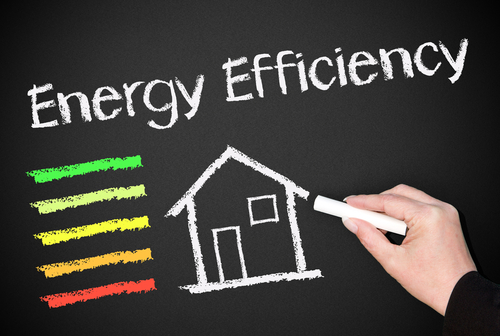As companies, organizations, and governments increasingly embrace going green, facility managers have been tasked with finding ways to make their operations more energy efficient.

To help highlight the progress of energy-efficient buildings across the country, the U.S. Environmental Protection Agency (EPA) has released its annual “Top Cities” list. The new 2021 ranking names the cities that were home to the largest number of ENERGY STAR-certified commercial and multifamily buildings last year.
Did your city make the list?
According to the EPA, Los Angeles leads the pack, with more than 580 ENERGY STAR-certified buildings. Close behind is Washington, D.C., with nearly 550 buildings, followed by San Francisco in third place. Atlanta and New York round out the top five.
“Cities and communities play an essential role in reducing energy use in commercial and multifamily buildings,” says EPA Administrator Michael S. Regan. “With help from ENERGY STAR, city leaders and building owners are working together to strengthen their economies and reduce the emissions that lead to climate change.”
L.A. Mayor Eric Garcetti comments, “Year in and year out, Los Angeles finds itself at the head of the pack when it comes to energy efficiency—showing the world that going green is good for your bottom line.”
The EPA says commercial buildings are responsible for 18 percent of the nation’s energy use and cost more than $190 billion per year in energy bills. The agency notes that ENERGY STAR-certified buildings use an average of 35 percent less energy and are responsible for 35 percent less carbon dioxide emissions than typical buildings.
First released in 2009, the EPA’s list of cities with the most ENERGY STAR-certified buildings shows how buildings across America are embracing energy efficiency as a simple and effective way to save money and reduce greenhouse gas emissions. To create the annual list, the EPA tallies the number of ENERGY STAR-certified buildings within each metropolitan area, as defined by the U.S. Census. These areas include the city itself as well as surrounding suburbs. This year’s Top Cities are:
| Rank | Metro Area | Building Count | Previous Rank |
|---|---|---|---|
| 1 | Los Angeles | 587 | 1 |
| 2 | Washington, DC | 549 | 2 |
| 3 | San Francisco | 341 | 6 |
| 4 | Atlanta | 329 | 4 |
| 5 | New York | 276 | 5 |
| 6 | Chicago | 237 | 7 |
| 7 | Houston | 195 | 10 |
| 8 | Dallas | 194 | 3 |
| 9 | Boston | 193 | 11 |
| 10 | Denver | 186 | 9 |
| 11 | Seattle | 165 | 13 |
| 12 | San Diego | 164 | 13 |
| 13 | Riverside, Calif. | 152 | 12 |
| 13 | Tampa | 152 | 16 |
| 15 | Minneapolis | 133 | 19 |
| 16 | Phoenix | 119 | 8 |
| 17 | Austin | 107 | 17 |
| 18 | San Jose | 104 | 18 |
| 19 | Charlotte | 103 | 23 |
| 20 | Miami | 87 | 21 |
| 20 | Philadelphia | 87 | 15 |
| 22 | Sacremento | 77 | 22 |
| 23 | Portland | 65 | N/A |
| 24 | Raleigh | 54 | N/A |
| 25 | San Antonio | 42 | N/A |
Across the country, nearly 6,500 commercial buildings earned the ENERGY STAR last year.
As of the end of 2020, over the lifetime of the program more than 37,000 buildings across America had earned the EPA’s ENERGY STAR certification. Together, these buildings have saved more than $5 billion on energy bills and prevented nearly 22 metric tons of greenhouse gas emissions—equal to the annual emissions of more than 2.6 million homes.
To earn the EPA’s ENERGY STAR, a commercial building must earn an ENERGY STAR score of 75 or higher on the EPA’s 1-100 scale, indicating that it is more energy efficient than 75 percent of similar buildings nationwide. When calculating a building’s ENERGY STAR score, ENERGY STAR takes into account multiple factors, including hours of operation, energy use, and occupancy. The EPA notes this means that, despite buildings operating differently during the COVID-19 pandemic, the latest ENERGY STAR scores and certifications still reflect actual, measured energy efficiency.
More stats, including the 2021 ranking of top small and midsize cities, are available here.
More info about earning the ENERGY STAR certification for commercial buildings is available here.
